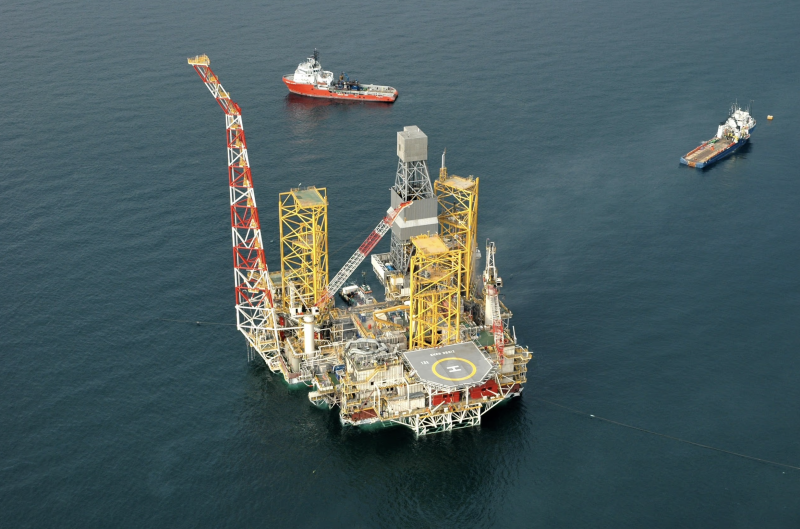BP is moving forward with the third phase of development for its giant Shah Deniz gas field offshore Azerbaijan.
BP announced final investment decision (FID) for the Shah Deniz Compression development as well as terminal electrification and solar-power projects on 3 June. BP also signed agreements during Baku Energy Week related to three offshore blocks.
Gordon Birrell, BP’s executive vice president of production and operations, said in a news release the next phase of development for Shah Deniz will access additional resources and extend production.
The Shah Deniz Compression project, expected to cost $2.9 billion, is designed to access and produce low-pressure gas resources from the giant gas field and is expected to allow production of an additional gross 50 Bcm of gas and 25 million bbl of condensate.
The project will include installation of a new electrically powered unmanned compression platform in 85-m water depth about 3 km from the existing Stage 2 Shah Deniz Bravo platform.
Equipped with four 11-MW compressors, the unmanned compression platform will compress export gas from both the Shah Deniz Alpha and Bravo platforms before it flows to the onshore Sangachal terminal south of Baku—serving as a key hub for offshore gas compression.
The plan calls for installing infield subsea gas pipelines to and from the existing Alpha and Bravo platforms' gas export lines, a combined power and fiber-optic cable from the Sangachal terminal to the unmanned compression platform to power the facility, and a backup interconnector power and fiber-optic cable from Bravo platform to the compression platform.
The project also includes brownfield work at the Alpha and Bravo platforms and the Sangachal terminal.
Construction is expected to begin later this year, with completion expected in 2029. First gas for compression is expected from the Shah Deniz A platform in 2029 and from the Shah Deniz B platform in 2030.
This third phase of development at Shah Deniz is expected to contribute to growing BP’s global upstream production to 2.3 to 2.5 million BOEPD by 2030.
Shah Deniz was originally discovered in 1999 with approximately 1 Tcm of gas and 2 billion bbl of condensate initially in place. Stage 1 started production in 2006, marking Azerbaijan as a gas exporter. Stage 2 was sanctioned in 2013 and went online in 2018.
Since startup, Shah Deniz has produced approximately 243 Bcm of gas and 50 million tonnes of condensate. In 2024, Shah Deniz produced approximately 28 Bscm of gas and around 35 million bbl of condensate.
BP operates the Shah Deniz Compression project with 29.99% interest on behalf of partners Lukoil with 19.99%, TPAO with 19%, SGC with 16.02%, NICO with 10%, and MVM with 5%.
Two More FIDs Announced
In related news, BP and its partners have reached FID for development of the linked Shafag solar and Sangachal terminal electrification projects. The Sangachal terminal will receive gas from Shah Deniz Alpha and Bravo platforms after the gas is compressed at the newly sanctioned unmanned platform.
The 240-MW Shafag solar project in Azerbaijan’s Jabrayil district will supply electricity to grid operator AzerEnerji, which will in turn provide equivalent power to the BP-operated Sangachal oil and gas terminal near Baku.
Construction on the Shafag solar project is expected to start this year and be complete in mid-2027. Partners in the project include BP with 50.01% interest, State Oil Company of the Azerbaijan Republic (SOCAR) Green with 39.99%, and ABDF with 10%.
BP will operate and manage the $230-million Shangachal terminal electrification project. Construction is planned to begin this year. Stage 1 is expected to be complete in mid-2027, and Stage 2 by the end of 2028.
Investors in the terminal include BP, SOCAR, TPAO, Lukoil, SGC, NICO, MOL, INPEX, ExxonMobil, ITOCHU, ONGC Videsh, Eni, MVM, and TotalEnergies.
More Exploration Access
BP also reached agreements that provide exploration access to three blocks in the Caspian Sea.
Türkiye’s TPAO is acquiring a 15% interest each from BP and SOCAR in the production-sharing agreement for the Shafag-Asiman block, located in 650 to 800-m water depth. The TPAO deal is expected to accelerate the evaluation of development opportunities for the block, where the SAX01 wildcat encountered gas condensate in 2021.
Ahmet Türkoğlu, chairman and CEO of TPAO, said in a news release that the deal marks an important step in regional energy cooperation and brings together SOCAR’s local expertise, BP’s technology, and TPAO’s offshore experience.
The deal is expected to be completed by the end of the third quarter of 2025, and BP will remain operator throughout the duration of the Shafag-Asiman block’s production-sharing agreement’s exploration phase. Once finalized, BP will hold 35% interest, SOCAR will hold 35% interest, and TPAO will own 30% interest.
The Shafag-Asiman block is 60 km from Shah Deniz and 145 km from the Sangachal terminal.
BP signed another deal with SOCAR through which BP will operate the Ashrafi-Dan Ulduzu-Aypara (ADUA) area and the Karabagh oil field, each with 35% interest, on behalf of SOCAR.
The ADUA area is in water depths of 80 to 180 m and contains multiple discoveries and prospects. A production-sharing agreement for the ADUA area was also entered into in 2018.
The Karabagh oil field is in 150 to 200 m water depths, and a risk service agreement for the development of the field was signed in 2018.
Birrell said the deals represent not only a new commitment to Azerbaijan by BP but also a significant growth opportunity for BP.


